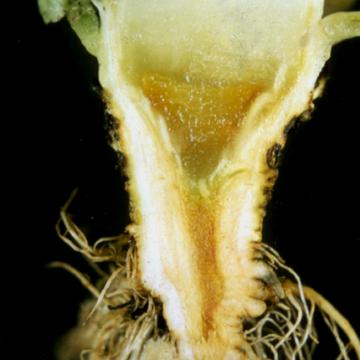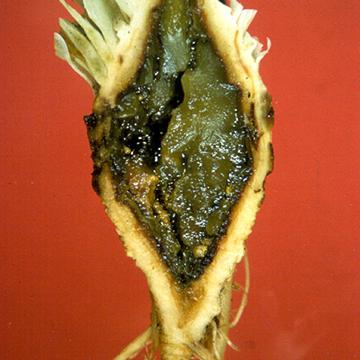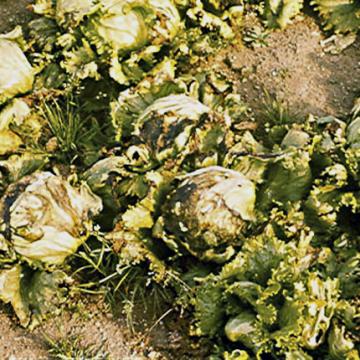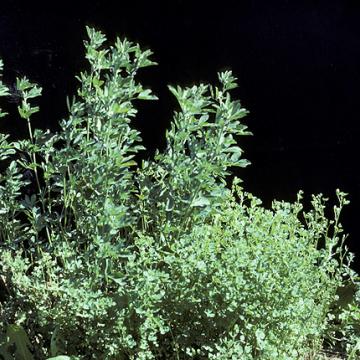DISEASE: Head rot (Jelly rot)
HOST: Lettuce
Sliced head of lettuce. Typical symptoms are a translucent appearance and browning or jelly rot of the stalk (crown).
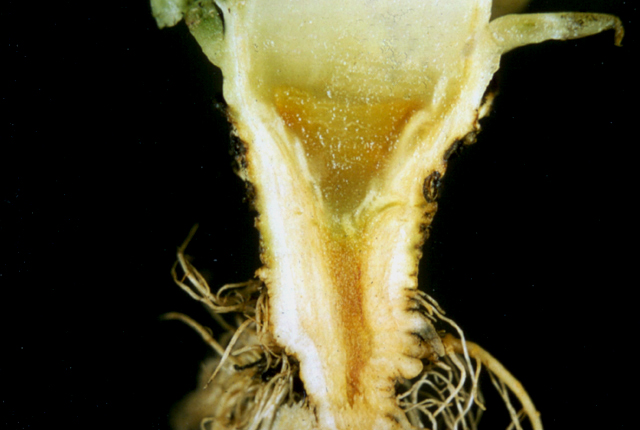
Head rot (Jelly rot) | Lettuce
DISEASE: Head rot (Jelly rot)
HOST: Lettuce (Lactuca sativa)
PATHOGEN: Pectobacterium carotovorum
PATHOGEN SYNONYM: Erwinia carotovora subsp. carotovora
SOURCE: J. Cho, A. Alvarez
DISEASE: Head rot (Jelly rot)
HOST: Lettuce
Advanced stage of lettuce stalk rot (crown).

Head rot (Jelly rot) | Lettuce
DISEASE: Head rot (Jelly rot)
HOST: Lettuce (Lactuca sativa)
PATHOGEN: Pectobacterium carotovorum
PATHOGEN SYNONYM: Erwinia carotovora subsp. carotovora
SOURCE: J. Cho, A. Alvarez
DISEASE: Head rot (Jelly rot)
HOST: Lettuce
Head rot of lettuce first appears as rapid wilt of outer wrapper leaves. Wilt is caused by collapse of vascular tissues, which develop a pinkish to brown discoloration.

Head rot (Jelly rot) | Lettuce
DISEASE: Head rot (Jelly rot)
HOST: Lettuce (Lactuca sativa)
PATHOGEN: Pectobacterium carotovorum
PATHOGEN SYNONYM: Erwinia carotovora subsp. carotovora
SOURCE: L. Fucikovsky
DISEASE: Hollow stalk
HOST: Tobacco
Hollow stalk may appear at time of topping and suckering. Top leaves wilt and the stalk becomes bare as the disease moves downward.
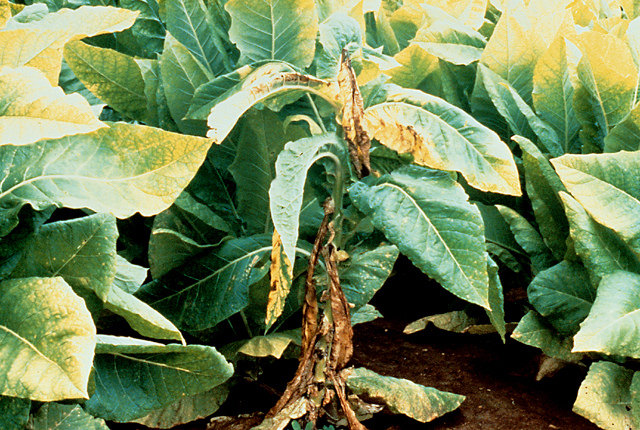
Hollow stalk | Tobacco
DISEASE: Hollow stalk
HOST: Tobacco (Nicotiana tabacum)
PATHOGEN: Pectobacterium carotovorum
PATHOGEN SYNONYM: Erwinia carotovora subsp. carotovora
SOURCE: P. Shoemaker
DISEASE: Hollow stalk
HOST: Tobacco
Infection of flue-cured tobacco stalks occur at wound sites caused by topping. After top infection, browning of pith occurs and tissues rot.
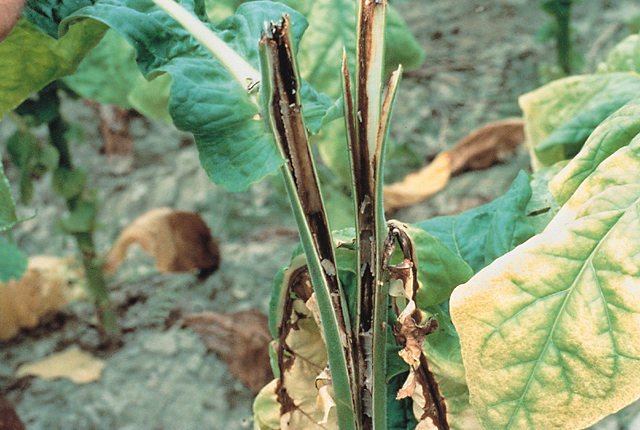
Hollow stalk | Tobacco
DISEASE: Hollow stalk
HOST: Tobacco (Nicotiana tabacum)
PATHOGEN: Pectobacterium carotovorum
PATHOGEN SYNONYM: Erwinia carotovora subsp. carotovora
SOURCE: APS
DISEASE: Witches'-broom
HOST: Alfalfa
Alfalfa plant (center) exhibiting stunting and proliferation of stems. Other symptoms are small, rounded, chlorotic, often puckered leaves and a yellowish cast.
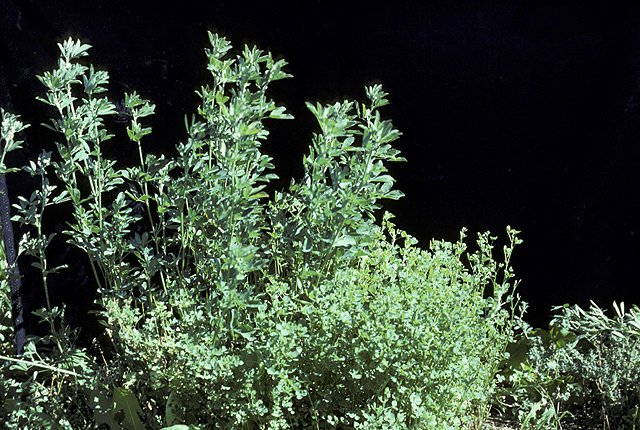
Witches'-broom | Alfalfa
DISEASE: Witches'-broom
HOST: Alfalfa (Medicago sativa)
PATHOGEN: 'Candidatus Phytoplasma trifolii'
PATHOGEN SYNONYM: Phytoplasma Clover proliferation group
SOURCE: S. Thomson
DISEASE: Witches'-broom
HOST: Alfalfa
Young plant (left) with small, numerous stems (witches'-broom). Healthy stems (right).

Witches'-broom | Alfalfa
DISEASE: Witches'-broom
HOST: Alfalfa (Medicago sativa)
PATHOGEN: 'Candidatus Phytoplasma trifolii'
PATHOGEN SYNONYM: Phytoplasma Clover proliferation group
SOURCE: S. Thomson
DISEASE: Witches'-broom
HOST: Cactus
Witches'-broom of Opuntia cactus.

Witches'-broom | Cactus
DISEASE: Witches'-broom
HOST: Cactus (Opuntia sp.)
PATHOGEN: 'Candidatus Phytoplasma' sp.
PATHOGEN SYNONYM: Phytoplasma (undefined)
SOURCE: R. McCoy, M. Davis
DISEASE: Witches'-broom
HOST: Citrus (Lime)
Lime tree with compact, small leaves (witches'-broom). Leaves on older brooms dry out and eventually drop, leaving dead, bare branches. There are no flowers or fruit on brooms.

Witches'-broom | Citrus (Lime)
DISEASE: Witches'-broom
HOST: Citrus (Lime) (Citrus sp.)
PATHOGEN: 'Candidatus Phytoplasma aurantifolia'
PATHOGEN SYNONYM: Phytoplasma Peanut witches'-broom group
SOURCE: J. Bove, M. Garnier


